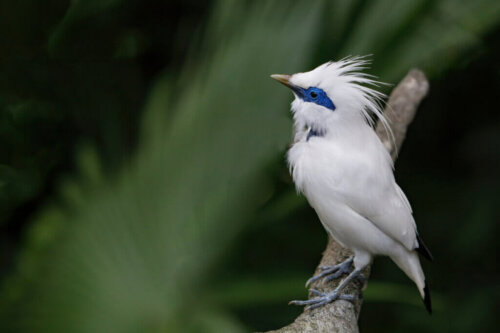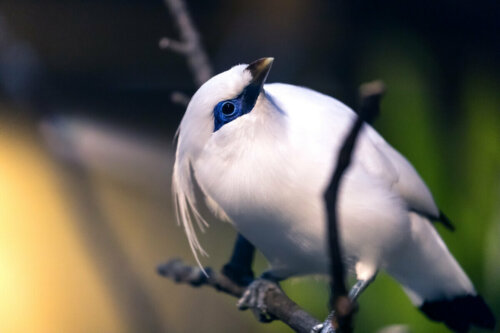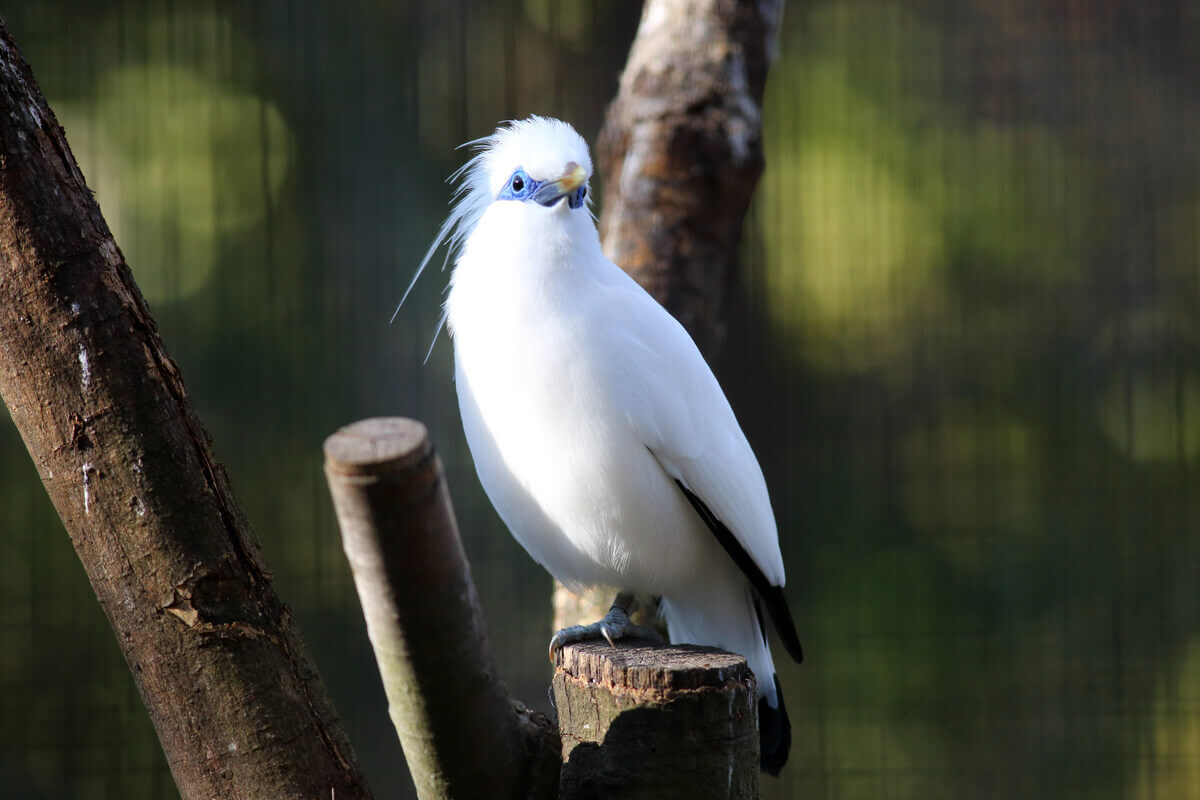The Bali Myna: A Beautiful Critically Endangered Bird

The Bali myna (Leucopsar rothschildi) is a fascinating and delicate bird. Unfortunately, it’s critically endangered. Since 1995, the wild population of this species has experienced a continuous decline. Today, experts estimate that there are fewer than 100 adults in the wild.
The illegal trade of this species brought it to the brink of extinction during the eighties. However, multiple organizations have promoted captive breeding programs so that this amazing bird doesn’t disappear from the face of the Earth. If you want to know more about this bird, read on.
The physical characteristics of the Bali myna
The Bali myna is a bird of the Passeriformes order. This order encompasses perching birds or songbirds and it’s the biggest order of birds in the world. This animal is native to the island of Bali (Indonesia). In fact, it’s the only endemic vertebrate species of the entire region.
Below, we share some of its most striking characteristics we decided to highlight:
- This is a medium-large bird, with a total length of about 9.8 inches.
- It’s almost entirely white and has blue bare skin around its eyes and legs.
- This species has a striking drooping crest made of feathers, which it lifts to communicate with other specimens.
- This bird is an omnivore, meaning it feeds on fruit, seeds, insects, and worms.

A critical situation
Unfortunately, the most striking thing about this animal is how close to extinction it is. According to the International Union for Conservation of Nature (IUCN), this species is on the Critically Endangered (CR) red list, as there are fewer than 100 adults in the wild. This bird is on the brink of extinction for four main reasons:
- Firstly, an alarmingly low population size.
- Its population is restricted to a very limited distribution area.
- Illegal hunting, since its black market trade led to the near disappearance of the species in the eighties. In 1990, there were only about 12-18 specimens in the wild.
- A shrinkage in their potential habitat due to climate change and anthropogenic activities.
Illegal trade is the reason that’s easiest to resolve. For this reason, the Bali myna is in the Appendix I of the Convention on International Trade in Endangered Species of Wild Fauna and Flora (CITES).
This means that the trade in specimens of these species is completely prohibited. In addition to this, the possession of captive-bred Bali mynas is also prohibited, unless an animal breeding permit and a legally-supported breeding intention are presented.
A ray of hope for this species
It’s not all bad news, as experts estimate that there are approximately 700-1000 specimens of captive-bred Bali mynas today. Despite that, the real challenge is successfully releasing them into their natural habitat.
Various foundations have organized maintenance programs for this species. In addition, many ornithologists and biologists have become aware of this bird’s situation and have actively involved themselves in the movement.
As it happens, in 2014, the Begawan Foundation released a few specimens into the wild. This event was covered by the media, as the famous primatologist Jane Goodall participated in the release of two birds.
Although these symbolic acts build hope for the future of the Bali myna, there’s still a lot of work to do. For example, experts estimate that people sell twice as many captive-bred specimens on the black market as those found in nature reserves. As long as there’s no widespread awareness of the precarious situation of this animal, the species will remain endangered.

An uncertain future
In short, the situation of the Bali myna is quite sensitive. Although experts estimate that there are about 1000 captive-bred specimens, the wild population of the species is decreasing and illegal trade continues to this day.
Unfortunately, this is a clear example of a species that illegal trade decimated. The government and the relevant entities should work to make sure this doesn’t occur. In addition, each one of us should make sure that our pets are bred in captivity, no exceptions.
All cited sources were thoroughly reviewed by our team to ensure their quality, reliability, currency, and validity. The bibliography of this article was considered reliable and of academic or scientific accuracy.
- Leucopsar rothschildi, IUCN. Recogido a 9 de diciembre en https://www.iucnredlist.org/species/22710912/129874226
- Van Balen, S. B., Dirgayusa, I. W. A., Adi Putra, I. M. W., & Prins, H. H. (2000). Status and distribution of the endemic Bali starling Leucopsar rothschildi. Oryx, 34(3), 188-197.
- Jepson, P. R. (2016). Saving a species threatened by trade: a network study of Bali starling Leucopsar rothschildi conservation. Oryx, 50(3), 480-488.
